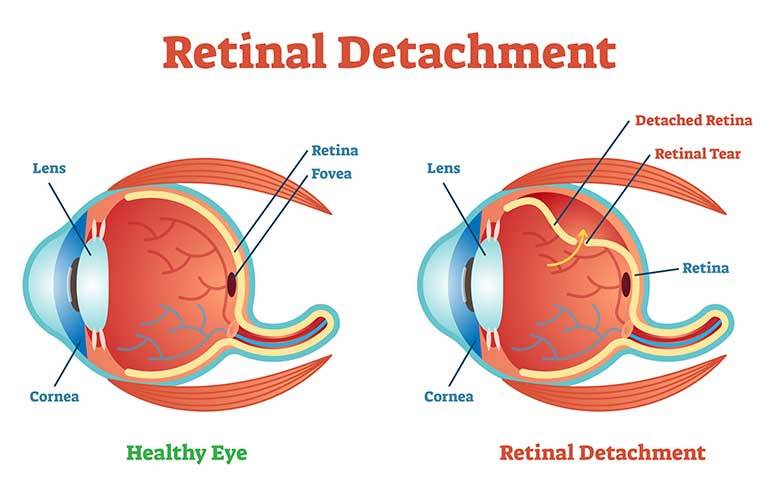
Lowell, MA — Regularly lifting objects that weigh 30 pounds or more is one of seven “strong predictors” of – and most correlated to – work-related retinal detachments or tears, researchers are warning.
For the study, a team led by researchers from the University of Massachusetts Lowell surveyed 200 participants with a retinal detachment or tear and 415 healthy control participants. All the participants answered questions about their general health, vision and physical exertion.
The participants who lifted 30 pounds or more on a regular basis at work were 1.8 times more likely to experience a retinal detachment or tear. The other strong predictors were age, gender, body mass index, myopia (nearsightedness), family history and cataract surgery.
“The biggest takeaway is safe lifting practices, which will protect your back, can also protect your eyes,” lead study author David Kriebel, a professor in the department of public health at UMass Lowell, told Safety+Health. “Thirty pounds is not a threshold for what’s safe versus dangerous to lift. Our research suggests that reducing lifting may reduce the risk of retinal detachment.”
Kriebel suggested that workers follow practices in NIOSH’s Ergonomic Guidelines for Manual Material Handling. The relationship between age and increased risk rose sharply from 40 years old to about 65 – where it a peaked – then dropped quickly beyond 80. Further, a nearly threefold increase in detachments and tears was found among participants with myopia.
In addition, retinal detachments and tears were more likely to be experienced by men, participants who had family members who had suffered a retinal detachment or tear, and those who had a cataract surgery on the same eye more than three months before the incident.
“These workers should consult with an ophthalmologist about whether they should adopt extra precautions, beyond standard safe lifting practices as detailed in the NIOSH guidelines,” Kriebel said. “Workers with eye conditions, including past cataract surgery, retinal detachment or a recent posterior vitreous detachment, may be at increased risk of retinal detachment.”
Among participants with increased BMI, the researchers found a lower risk of both retinal detachments and retinal tears. This contrasts with two previously published studies – a 2008 Italian study in the journal Epidemiology and a 2017 Swedish study in the British Medical Journal – that found positive associations with retinal detachments or tears and higher BMI.
The new study, which was funded by NIOSH, was published online April 7 in the Journal of Occupational and Environmental Medicine.


